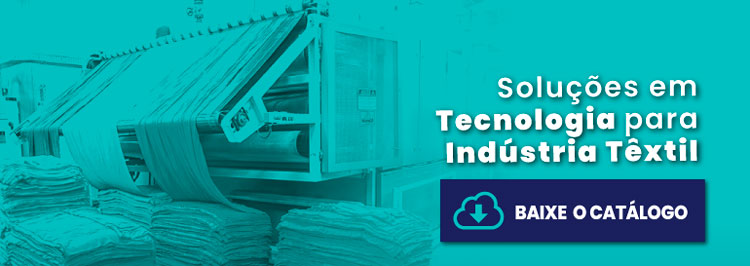The raw material is well known in the textile segment, as it is an essential part of the finishing process. It basically consists of a conveyor chain that runs on the widening rail, as well as a heated oven to dry and provide heat treatment.
Used in flat fabrics, knits or non-woven fabrics, it works in thermosetting processes, curing chemical or printed products, drying and some types of dyeing.
Although textile processing companies are normally well developed in finishing and processing processes, there are still some problems that cause costs for these companies. The good news is that there are already accessories that can solve most of them. Continue reading and understand!
Common difficulties in using textile raw materials
Using textile raw material is essential, but there are some problems arising from its use, such as the insertion of non-needle raw material correctly, the misaligned ironing system, the loose needling chain, the selvedge cutter system without cutting precision, excess smoke , between others.
Below we will talk about the existing solutions to these problems. This way you can modernize your textile industry and increase textile productivity.
Smoke reduction
Does your company usually place raw tissue in the raw tissue without carrying out the purging process first? Be aware that this could be causing excess smoke, as the dirt and oil are heated and evaporated, leaving a lot of smoke coming out of the exhaust system and damaging the environment. Furthermore, part of the oil crystallizes in the fibers, making it difficult to absorb the dyes and making the fabrics harder to touch.
To prevent this from happening, the fabric must go through the purging process before pre-fixing. This way it enters clean and does not cause the problems mentioned, and can even eliminate the exhaust gas washer.
Tissue tension control
Fabrics with elastane, especially mesh, have more elastane fiber in their composition, making tension control even more necessary. Although the branch can control overfeeding to achieve shrinkage, it is necessary to avoid stretching.
To control the tension, pay attention to each step of the input, from the centralizer, unwinding, opening threads, timing equipment, straightener and wefts, among others.
Also have control over standards and procedures of the production process and carry out treatments so that the fabric and contraction are restored to their original state.
The Hydro Sprinkler, for example, helps to insert the necessary moisture into the fabric according to the composition of the mesh, in addition to avoiding breakage in the process when finishing with softeners, flame retardant treatments, waterproofing, among others.
Needling control
Another important feature to increase the productivity of the textile industry is to carry out needling control. Waste that has already gone through all stages of production must be used as much as possible and, therefore, it is necessary to cut as little selvedge as possible, introducing the fabric into the needles in a constant manner, as close to the edges as possible.
Some accessories can be attached to the branch to help, such as:
Branch alignment and introduction system – combined with the photocell and selvedge opener, this equipment was developed to promote the efficient movement of the branch rails into the correct position. This ensures the perfect positioning of the fabrics/mesh on the needling.
Selvedge opener – equipment developed to remove folds and curls from textile materials, normally used in branch inputs, needle dryers and ramets (compactors).
Edge guide sensor – Ideal for continuous process machines, these sensors identify mesh/fabric edges, bringing more quality to the material your company produces.
Digital ruler sensor – Eliminates reading errors normally made by the conventional measuring tape method, it is used to monitor the variation in mesh/fabric width. It can be attached to branches, compactors, proofreaders, non-stop machines and other continuous process equipment that requires quality control.
Grammage control
In the case of elastic fabrics, the weight is never constant when it enters the strand, as previous processes, handling and storage of the fabric affect the result. Currently, factories control by sampling, a process in which a sample of the fabric is taken from each piece, cut and measured by the operator at the exit of the branch.
In addition to affecting production, the process depends on the operator and does not analyze variations and, depending on how it is carried out, it can still generate failures and setbacks. The ideal is to attach equipment to the branch exit so that the dry fabrics can be measured.
The proofreader can fulfill this role, collecting information about the fabric and analyzing possible defects.
After all these tips, your company is certainly better prepared to increase textile productivity. If you want to further increase productivity in general, check out how to improve productivity in a clothing factory!


![E-book]How to ensure quality control in the textile industry?](https://deltamaquinastexteis.com.br/wp-content/uploads/2019/04/ebook-como-garantir-o-controle-de-qualidade-na-industria-textil.jpg)
